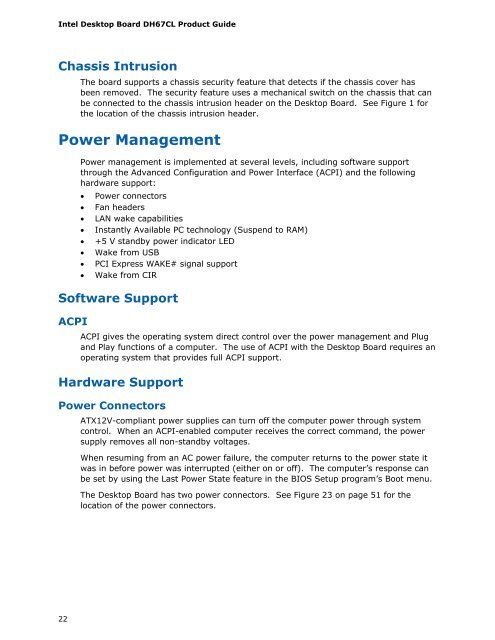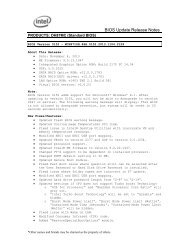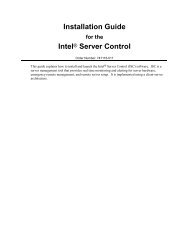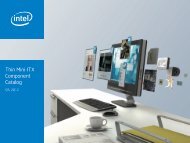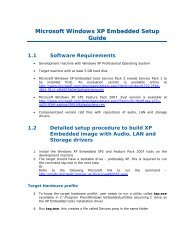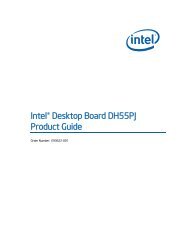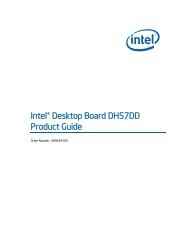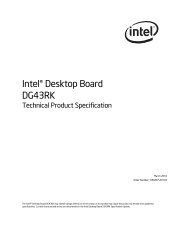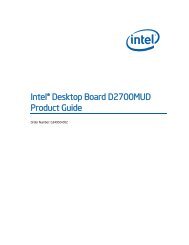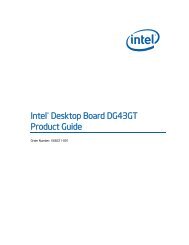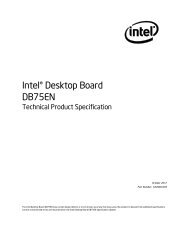Intel® Desktop Board DH67CL Product Guide
Intel® Desktop Board DH67CL Product Guide
Intel® Desktop Board DH67CL Product Guide
You also want an ePaper? Increase the reach of your titles
YUMPU automatically turns print PDFs into web optimized ePapers that Google loves.
Intel <strong>Desktop</strong> <strong>Board</strong> <strong>DH67CL</strong> <strong>Product</strong> <strong>Guide</strong><br />
Chassis Intrusion<br />
22<br />
The board supports a chassis security feature that detects if the chassis cover has<br />
been removed. The security feature uses a mechanical switch on the chassis that can<br />
be connected to the chassis intrusion header on the <strong>Desktop</strong> <strong>Board</strong>. See Figure 1 for<br />
the location of the chassis intrusion header.<br />
Power Management<br />
Power management is implemented at several levels, including software support<br />
through the Advanced Configuration and Power Interface (ACPI) and the following<br />
hardware support:<br />
• Power connectors<br />
• Fan headers<br />
• LAN wake capabilities<br />
• Instantly Available PC technology (Suspend to RAM)<br />
• +5 V standby power indicator LED<br />
• Wake from USB<br />
• PCI Express WAKE# signal support<br />
• Wake from CIR<br />
Software Support<br />
ACPI<br />
ACPI gives the operating system direct control over the power management and Plug<br />
and Play functions of a computer. The use of ACPI with the <strong>Desktop</strong> <strong>Board</strong> requires an<br />
operating system that provides full ACPI support.<br />
Hardware Support<br />
Power Connectors<br />
ATX12V-compliant power supplies can turn off the computer power through system<br />
control. When an ACPI-enabled computer receives the correct command, the power<br />
supply removes all non-standby voltages.<br />
When resuming from an AC power failure, the computer returns to the power state it<br />
was in before power was interrupted (either on or off). The computer’s response can<br />
be set by using the Last Power State feature in the BIOS Setup program’s Boot menu.<br />
The <strong>Desktop</strong> <strong>Board</strong> has two power connectors. See Figure 23 on page 51 for the<br />
location of the power connectors.


